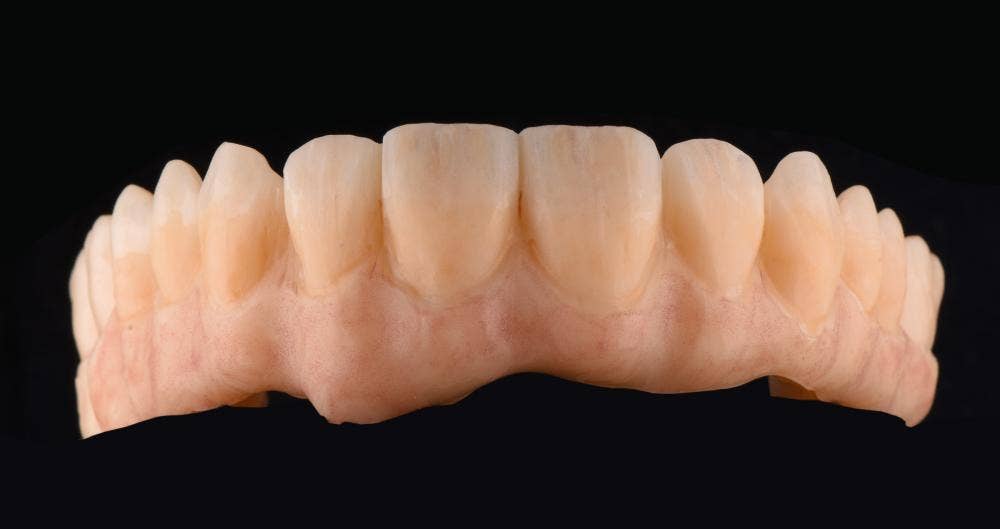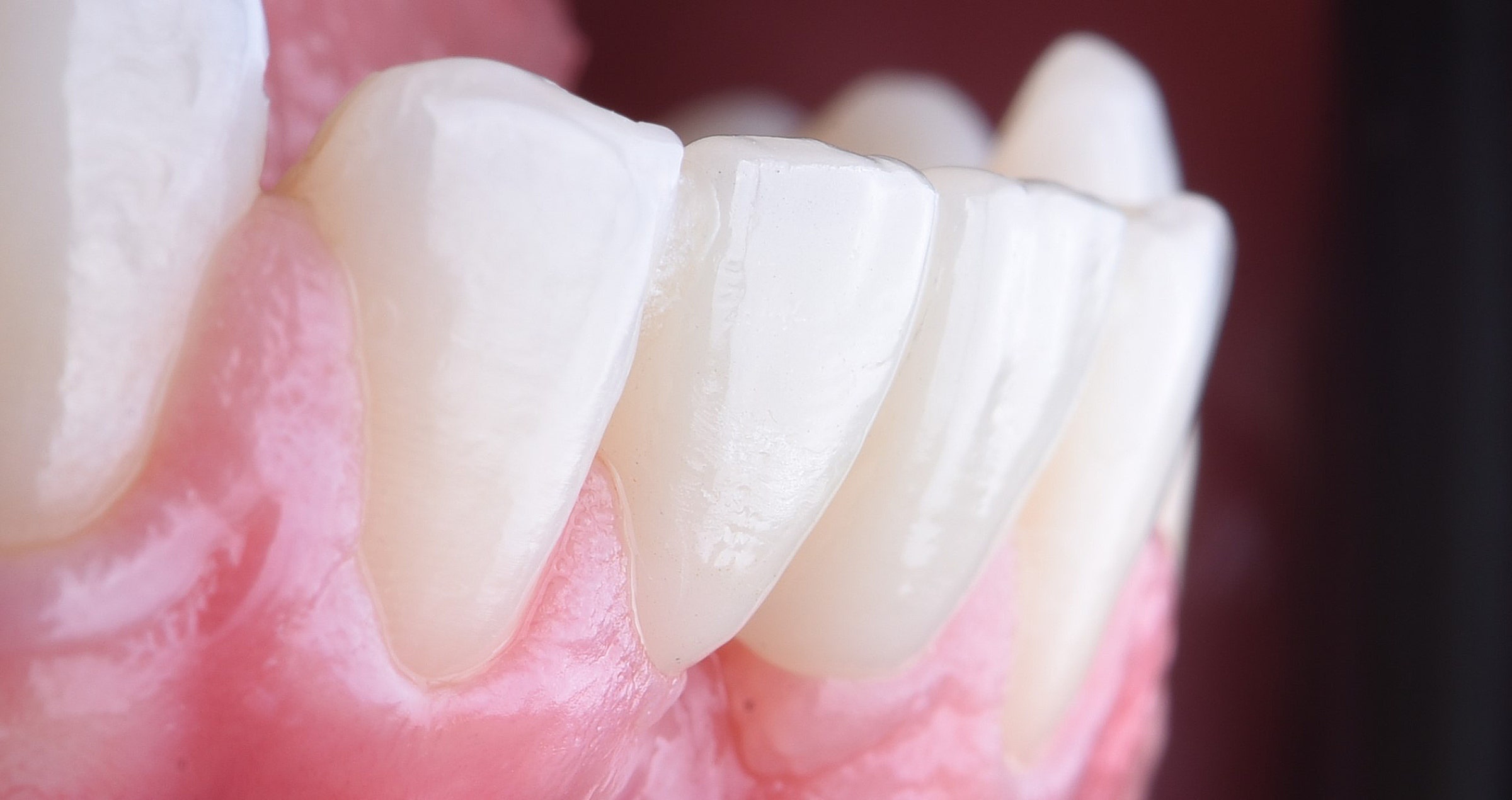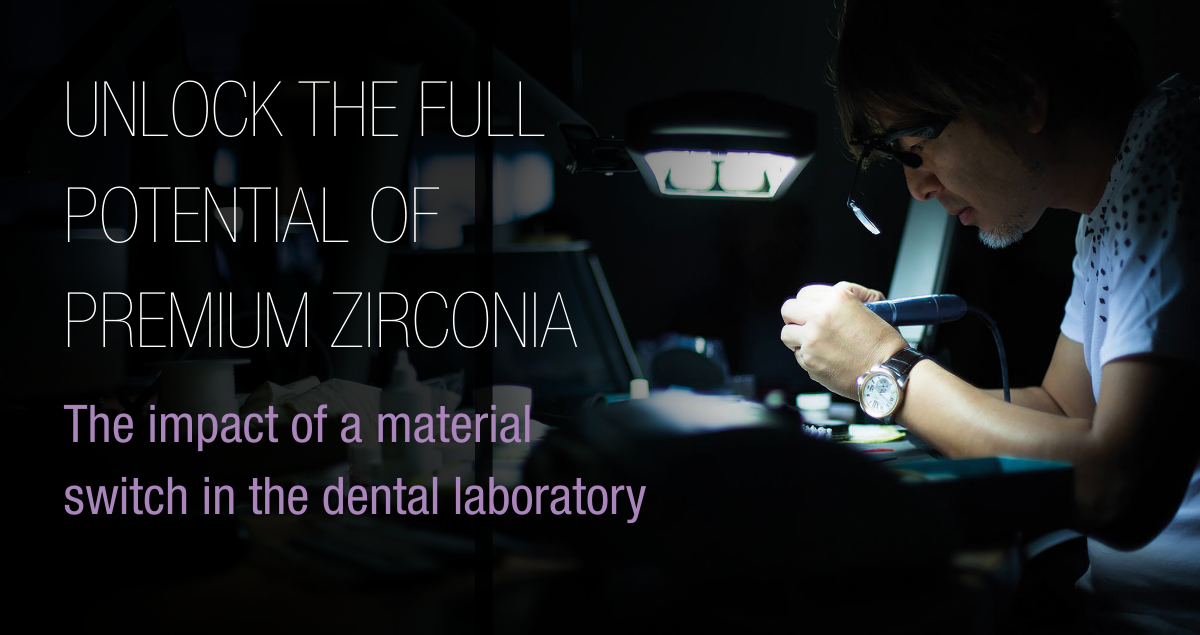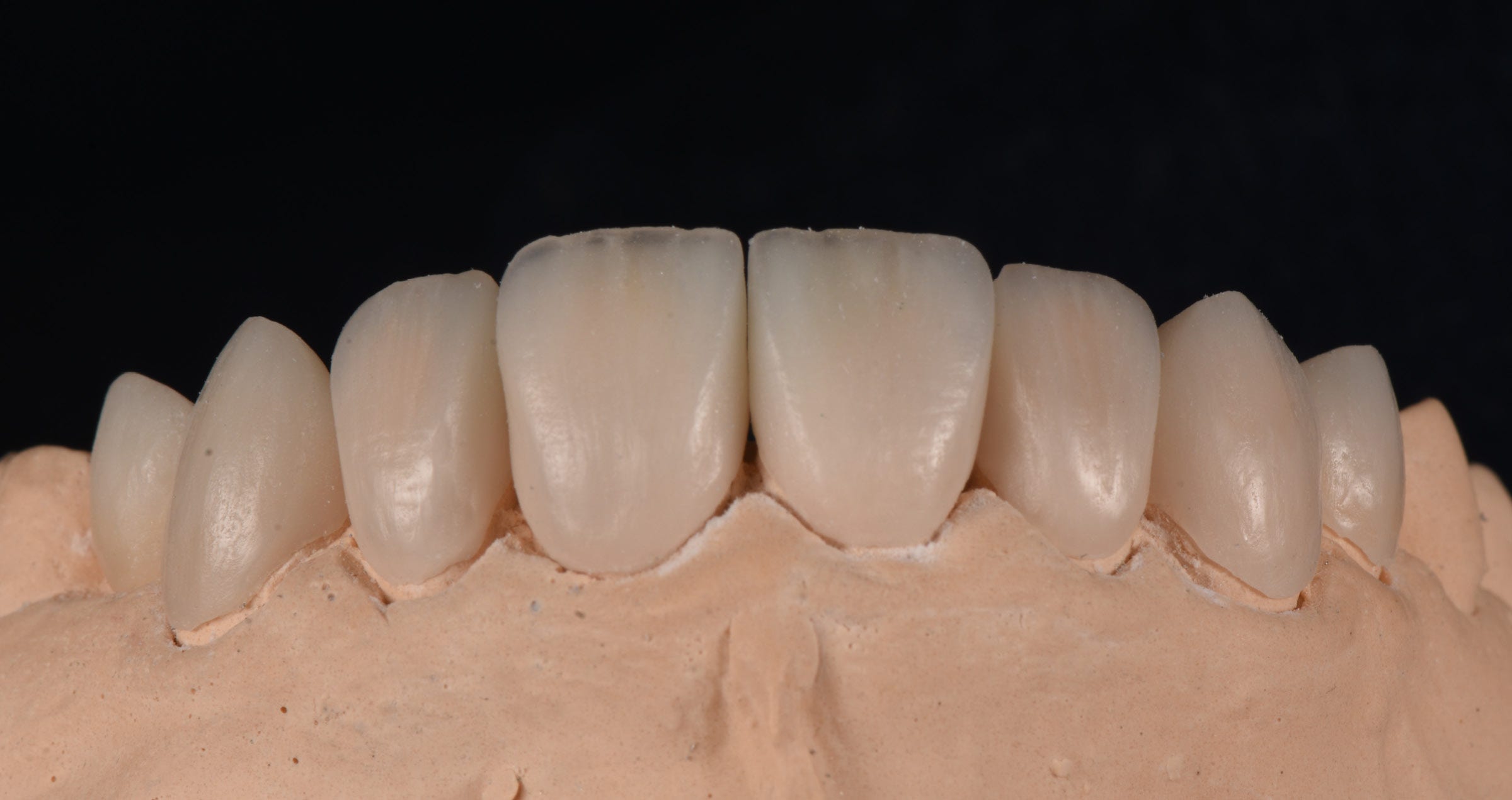
Key properties of modern one-step bonding agents
An interview with Dr. Tomohiro Takagaki, DDS, PhD by Dr. Jorge Espigares, DDS, PhD
Due to its increased usability, one-step universal adhesives are becoming more popular and are the choice of many clinicians all around the world. Nonetheless, some studies have shown lower performance for one-step universal adhesives than previous generations.
 |
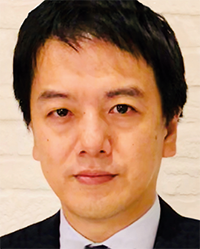 |
| Dr. Jorge Espigares, DDS, PhD |
Dr. Tomohiro Takagaki, DDS, PhD |
Dr. Jorge Espigares, DDS, PhD, Planning and Development Department at Kuraray Noritake Dental Inc., interviewed Dr. Tomohiro Takagaki, DDS, PhD, lecturer and former assistant professor at Tokyo Medical and Dental University (TMDU), pioneer in the field adhesive dentistry, author of many publications, and currently lecturing at Asahi University, Japan.
Dr. Takagaki, in your opinion, what are the most important factors for a good and durable adhesion?
Dr. Takagaki: Good resin infiltration (penetration) and good polymerization are essential factors for good bonding. This is the basic concept for the formation of the hybrid layer. Additionally, there are other important factors such as low water sorption for bonding durability and the demineralization depth, which should be the same as the depth that the resin is capable of penetrating to.
Nowadays, the trend seems to be one-step universal adhesives. Do you believe that this reduction in steps has brought any limitations compared to previous generations?
Dr. Takagaki: Traditionally, one-bottle adhesives are too hydrophilic. This hydrophilicity also brings high water sorption, therefore the durability of the interface is compromised. At TMDU, we did not accept one-step bonding agents in clinical usage based on results we obtained in our research in that area.
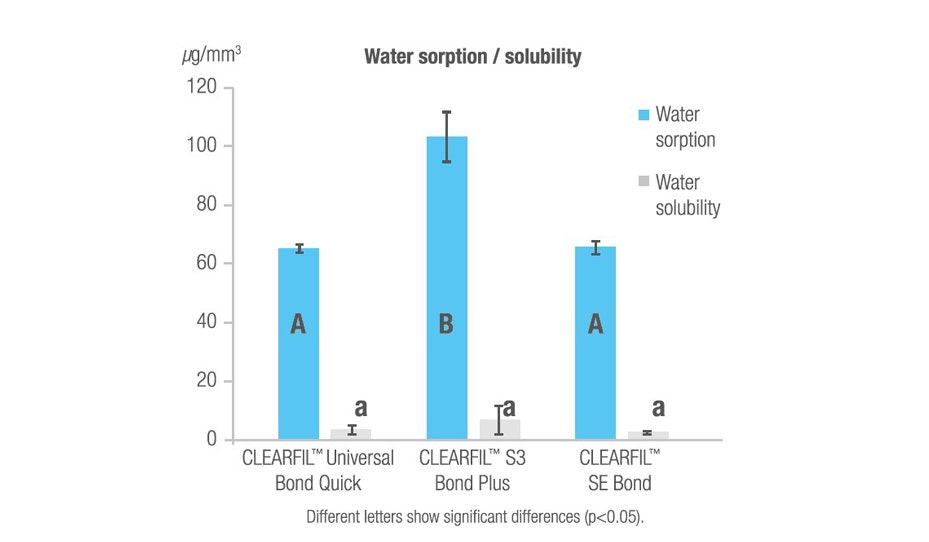
Water sorption/solubility of different bonding agents.
Data provided by Tokyo Medical and Dental University.
What do you think of the new MDP-Amide chemistry (included in CLEARFIL™ Universal Bond Quick) for overcoming such limitations?
Dr. Takagaki: The MDP monomer has proved through research to be the best monomer for adhesion to tooth substrate. Nowadays, many manufacturers include MDP. Although the MDP purity and performance differs from Kuraray Noritake’s original one, in one-step bonding agents only MDP is not enough. The differential factor is the amide monomer that provides the desired high penetration and low water sorption.
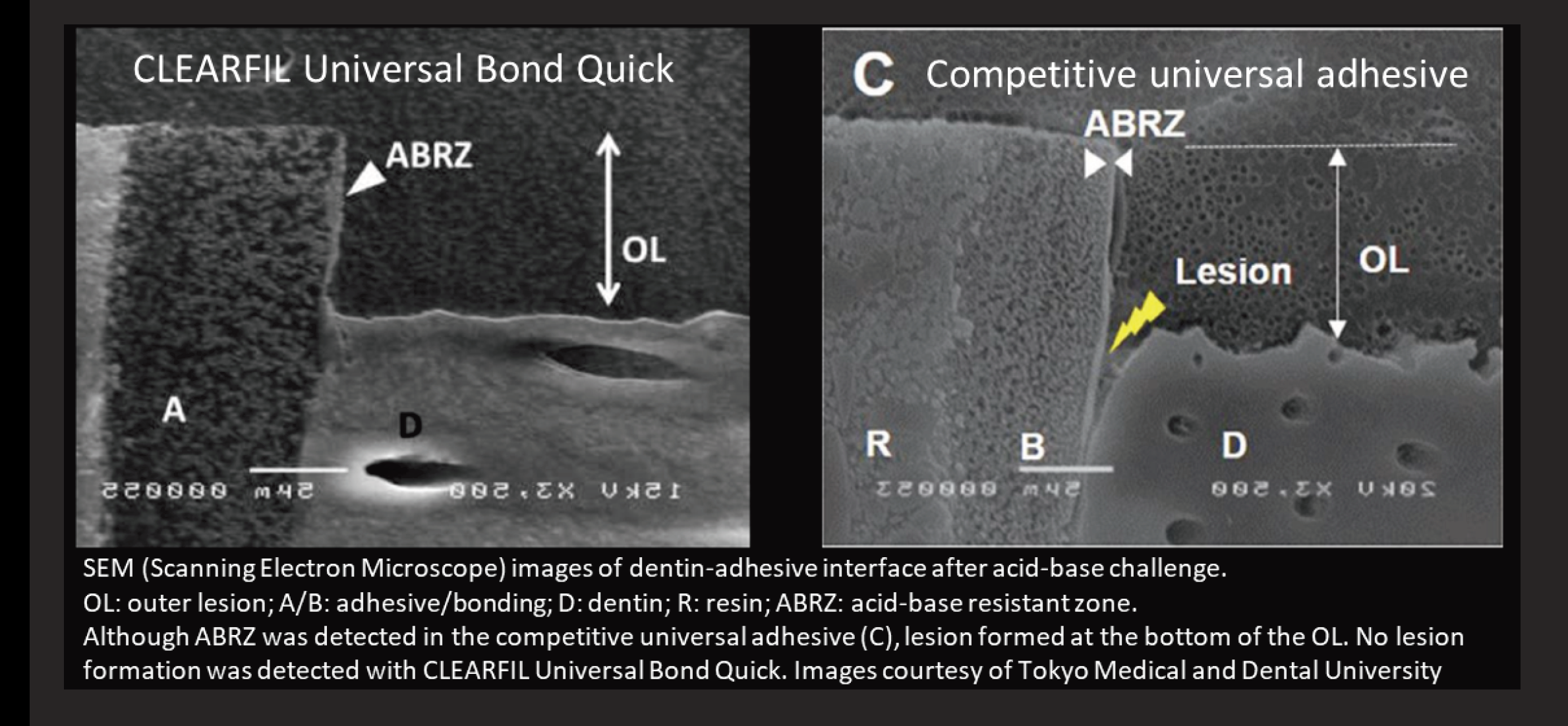
You and your work at TMDU are very well known in the field of adhesive dentistry. Did your research show results that would support the above mentioned statements?
Dr. Takagaki: In our research results, we observed indeed a lower water sorption compared to previous one-step generations. Actually, we were surprised to see water sorption levels equivalent to the two step bonding agent gold standard: CLEARFIL™ SE BOND. (1. Graph). The amide monomer behaves as hydrophilic before the polymerization and as hydrophobic after, which is the desired situation for one bottle self-etching systems.
Would you recommend, therefore, the usage of universal bonding agents in daily practice?
Dr. Takagaki: Yes, but as mentioned, the MDP-amide chemistry is essential. It is noteworthy that another company is also using an amide monomer. However, our results at TMDU indicate that the performance in terms of penetration is not that good. Actually, we still saw lesion formation with that other company’s amide. Kuraray Noritake’s MDP-amide chemistry is the only one that avoids lesion formation (2. SEM images). In addition, CLEARFIL™ Universal Bond Quick releases fluoride that helps protecting the interface degradation and its “no waiting time” makes it ideal for challenging conditions as pediatric and/or geriatric patients.
Let’s get out of the laboratory, according to your clinical experience is there any extra advice that you could provide for a reliable adhesion?
Dr. Takagaki: One important point that sometimes is missed is to properly air-dry the solvent for at least 5 seconds after the bond application. I also recommend selective enamel etch for achieving aesthetic margins, even if all universal bonding agents allow self-etching. Finally, I would like to talk about simplicity. We dentists tend to shorten the necessary time and sometimes the rubbing time is not respected. With CLEARFIL™ Universal Bond Quick, our research showed not significant difference in bond strength with rubbing time (3. Graph). Therefore, it reduces the risk of error, allowing consistent results. I believe that simplicity is required so the fact that CLEARFIL™ Universal Bond Quick and PANAVIA™ SA Cement Universal can cover direct and indirect restorations, is ideal for daily practice. CLEARFIL™ Universal Bond Quick achieves what I am looking for in my practice: easy, quick and reliable.
Although the amount of available universal adhesives market is large, key properties like the ones above-mentioned may help in the complicated process of selecting a one-step adhesive that offers the best performance, simplicity, consistency and predictable results.

Bond strength upon rubbing time. Data courtesy of Tokyo Medical and Dental University.
- 10. aug. 2021


